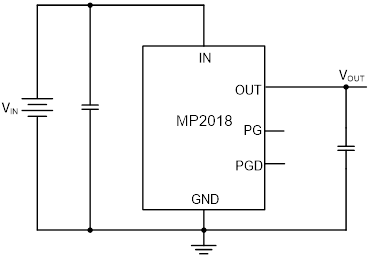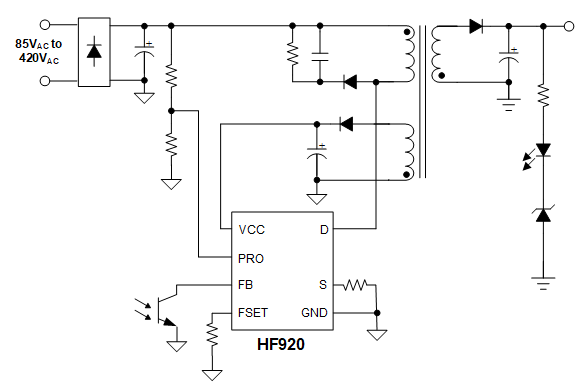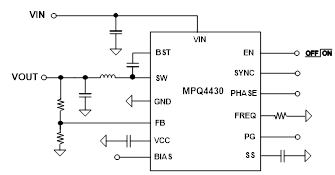Voltage Regulator Types and Working Principles

Get valuable resources straight to your inbox - sent out once per month
We value your privacy
How Does a Voltage Regulator Work?
A voltage regulator is a circuit that creates and maintains a fixed output voltage, irrespective of changes to the input voltage or load conditions.
Voltage regulators (VRs) keep the voltages from a power supply within a range that is compatible with the other electrical components. While voltage regulators are most commonly used for DC/DC power conversion, some can perform AC/AC or AC/DC power conversion as well. This article will focus on DC/DC voltage regulators.
Types of Voltage Regulators: Linear vs. Switching
There are two main types of voltage regulators: linear and switching. Both types regulate a system’s voltage, but linear regulators operate with low efficiency and switching regulators operate with high efficiency. In high-efficiency switching regulators, most of the input power is transferred to the output without dissipation.
Linear Regulators
A linear voltage regulator utilizes an active pass device (such as a BJT or MOSFET), which is controlled by a high-gain operational amplifier. To maintain a constant output voltage, the linear regulator adjusts the pass device resistance by comparing the internal voltage reference to the sampled output voltage, and then driving the error to zero.
Linear regulators are step-down converters, so by definition the output voltage is always below the input voltage. However, these regulators offer a few advantages: they are generally easy to design, dependable, cost-efficient, and offer low noise as well as a low output voltage ripple.
Linear regulators, such as the MP2018, only require an input and output capacitor to operate (see Figure 1). Their simplicity and reliability make them intuitive and simple devices for engineers, and are often highly cost-effective.

Figure 1: MP2018 Linear Regulator
Switching Regulators
A switching regulator circuit is generally more complicated to design than a linear regulator, and requires selecting external component values, tuning control loops for stability, and careful layout design.
Switching regulators can be step-down converters, step-up converters, or a combination of the two, which makes them more versatile than a linear regulator.
Advantages of switching regulators include that they are highly efficient, have better thermal performance, and can support higher current and wider VIN / VOUT applications. They can achieve greater than 95% efficiency depending on the application requirements. Unlike linear regulators, a switching power supply system may require additional external components, such as inductors, capacitors, FETs, or feedback resistors. The HF920 is an example of a switching regulator that offers high reliability and efficient power regulation (see Figure 2).

Figure 2: HF920 Switching Regulator
Limitations of Voltage Regulators
One of the main disadvantages for linear regulators is that they can be inefficient, as they dissipate large amounts of power in certain use cases. The voltage drop of a linear regulator is comparable to a voltage drop across a resistor. For instance, with a 5V input voltage and a 3V output voltage, there is a 2V drop between the terminals, and the efficiency is limited to 3V/5V (60%). This means linear regulators are best suited for applications with lower VIN / VOUT differentials.
It is important to consider the estimated power dissipation of a linear regulator in application, since using larger input voltages results in high power dissipation that can overheat and damage components.
Another limitation of linear voltage regulators is that they are only capable of buck (step-down) conversion, in contrast to switching regulators, which also offer boost (step-up) and buck-boost conversion.
Switching regulators are highly efficient, but some disadvantages include that they are generally less cost-effective than linear regulators, larger in size, more complex, and can create more noise if their external components are not carefully selected. Noise can be very important for a given application, as noise can affect circuit operation and performance, as well as EMI performance.
Switching Regulator Topologies: Step-Down, Step-Up, Linear, LDO, and Adjustable
There are various topologies for linear and switching regulators. Linear regulators often rely on low-dropout (LDO) topologies. For switching regulators, there are three common topologies: step-down converters, step-up converters, and buck-boost converters. Each topology is described below:
LDO Regulators
One popular topology for linear regulators is a low-dropout (LDO) regulator. Linear regulators typically require the input voltage to be at least 2V above the output voltage. However, an LDO regulator is designed to operate with a very small voltage difference between input and output terminals, sometimes as low as 100mV.
Step-Down and Step-Up Converters
Step-down converters (also called buck converters) take a larger input voltage and produce a lower output voltage. Conversely, step-up converters (also called boost converters) take a lower input voltage and produce a higher output voltage.
Buck-Boost Converters
A buck-boost converter is a single-stage converter that combines the functions of a buck and a boost converter to regulate the output over a wide range of input voltages that can be greater or less than the output voltage.
Voltage Regulator Control
The four fundamental components of a linear regulator are a pass transistor, error amplifier, voltage reference, and resistor feedback network. One of the inputs to the error amplifier is set by two resistors (R1 and R2) to monitor a percentage of the output voltage. The other input is a stable voltage reference (VREF). If the sampled output voltage changes relative to VREF, the error amplifier changes the pass transistor’s resistance to maintain a constant output voltage (VOUT).
Linear regulators typically only require an external input and output capacitor to operate, making them easy to implement.
On the other hand, a switching regulator requires more components to create the circuit. The power stage switches between VIN and ground to create charge packets to deliver to the output. Similar to a linear regulator, there is an operational amplifier that samples the DC output voltage from the feedback network and compares it to an internal voltage reference. Then the error signal is amplified, compensated, and filtered. This signal is used to modulate the PWM duty cycle to pull the output back into regulation. For example, if the load current increases rapidly and causes an output voltage droop, the control loop increases the PWM duty cycle to supply more charge to the load and bring the rail back into regulation.
Linear and Switching Regulator Applications
Linear regulators are often used in applications that are cost-sensitive, noise-sensitive, low-current, or space constrained. Some examples include consumer electronics such as headphones, wearables, and Internet-of-Things (IoT) devices. For instance, applications such as a hearing aid could use a linear regulator because they don’t have a switching element that could create unwanted noise and interfere with the device’s performance.
Moreover, if designers are mainly interested in creating a low-cost application, they need not be as concerned with power dissipation, and can rely on a linear regulator.
Switching regulators are beneficial for more general applications, and are especially useful in applications that need efficiency and performance, such as consumer, industrial, enterprise, and automotive applications (see Figure 3). For example, if the application requires a large step-down solution, a switching regulator is better suited, since a linear regulator could create high power dissipation that would damage other electrical components.

Figure 3: MPQ4430-AEC1 Step-Down Regulator
What are the Basic Parameters for a Voltage Regulator IC?
Some of the basic parameters to consider when using a voltage regulator are the input voltage, output voltage, and output current. These parameters are used to determine which VR topology is compatible with a user’s IC.
Other parameters — including quiescent current, switching frequency, thermal resistance, and feedback voltage — may be relevant depending on the application.
Quiescent current is important when efficiency during light-load or standby modes is a priority. When considering switching frequency as a parameter, maximizing the switching frequency leads to smaller system solutions.
Additionally, thermal resistance is critical to remove heat from the device and dissipate it across the system. If the controller includes an internal MOSFET, then all losses (conductive and dynamic) are dissipated in the package and must be considered when calculating the maximum temperature of the IC.
Feedback voltage is another important parameter to examine because it determines the lowest output voltage that the voltage regulator can support. It is standard to look at the voltage reference parameters. This limits the lower output voltage, the accuracy of which impacts the accuracy of the output voltage regulation.
How to Pick the Right Voltage Regulator
To select the proper voltage regulator, the designer must first understand their key parameters such as VIN, VOUT, IOUT, system priorities (e.g. efficiency, performance, cost), and any additional key features, such as power good (PG) indication or enable control.
Once the designer has defined these requirements, use a parametric search table to find the best device to meet the desired requirements. The parametric search table is a valuable tool for designers, as it offers different features and packages available to meet the required parameters for your application.
Every MPS device comes with a datasheet that details what external parts are needed, and how to calculate their values to achieve an efficient, stable, and high-performance design. The datasheet can be used to calculate component values such as output capacitance, output inductance, feedback resistance, and other key system components. Furthermore, you can use simulation tools such as the DC/DC Designer or MPSmart software, reference application notes, or contact your local FAE with questions.
MPS offers a variety of efficient, compact linear and switching voltage regulators, including the HF500-x family, MP171x family, MP20056, MP28310, MPQ4572-AEC1, and MPQ2013-AEC1.
References
Electronics Engineering Glossary
_________________________
Did you find this interesting? Get valuable resources straight to your inbox - sent out once per month!
Technical Forum











Log in to your account
Create New Account